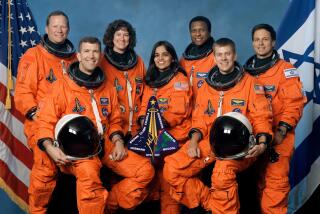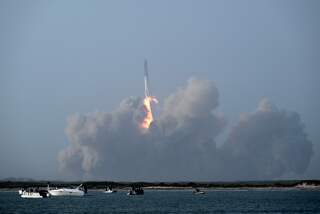NASA Overrode Safety to Launch Space Shuttles
- Share via
Re “Forgotten Lessons of Challenger Seen as Haunting NASA,” July 28: I am a retired Boeing space engineer. I was a member of the photo team that investigated the Challenger disaster. I also derived the “Crater” program, which has forewarned NASA since 1985 of the dangers regarding large foam debris -- debris that undoubtedly caused the Columbia disaster.
What went wrong in both cases is not puzzling at all when viewed in the terms expressed in your article by Allan J. McDonald.
In both the Challenger and Columbia cases, the shuttle was launched into an environment well outside of its “qualified limits.” To operators of commercial and military aircraft, this is not an option because of the risk to vehicle and passengers. It follows that no shuttles should have been launched knowing there was a possibility of a large (about two pounds) piece of foam insulation hitting the shuttle’s thermal protection surfaces, until tests had shown this to be acceptable.
It has been learned during the Columbia investigation that numerous times during the last 70 missions a piece of foam of this size detached from the external tank, yet the impact tests for debris of this size are only now being done.
NASA should be constrained to operate the space shuttles only within their qualified limits. No more “calls” by management that override the engineers who keep track of the qualification limits -- and the consequences of exceeding them.
Allen J. Richardson
Fullerton
*
I don’t think NASA’s “value structure” is so very different from commercial and military value structures; nor, for that matter, is it any different from anywhere else money is involved.
“Dilbert” isn’t satire; it’s reality. Getting and keeping the contract is what matters, through whatever means possible. People who ask questions create problems and impediments.
Let people do good work and don’t get rid of them for it.
Ronald Webster
Long Beach
More to Read
Sign up for Essential California
The most important California stories and recommendations in your inbox every morning.
You may occasionally receive promotional content from the Los Angeles Times.










